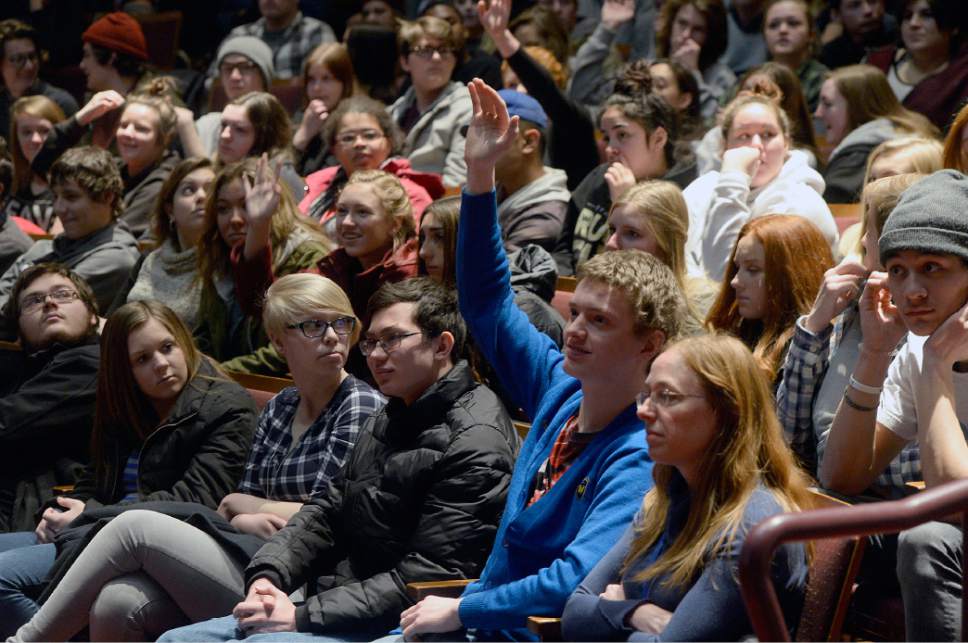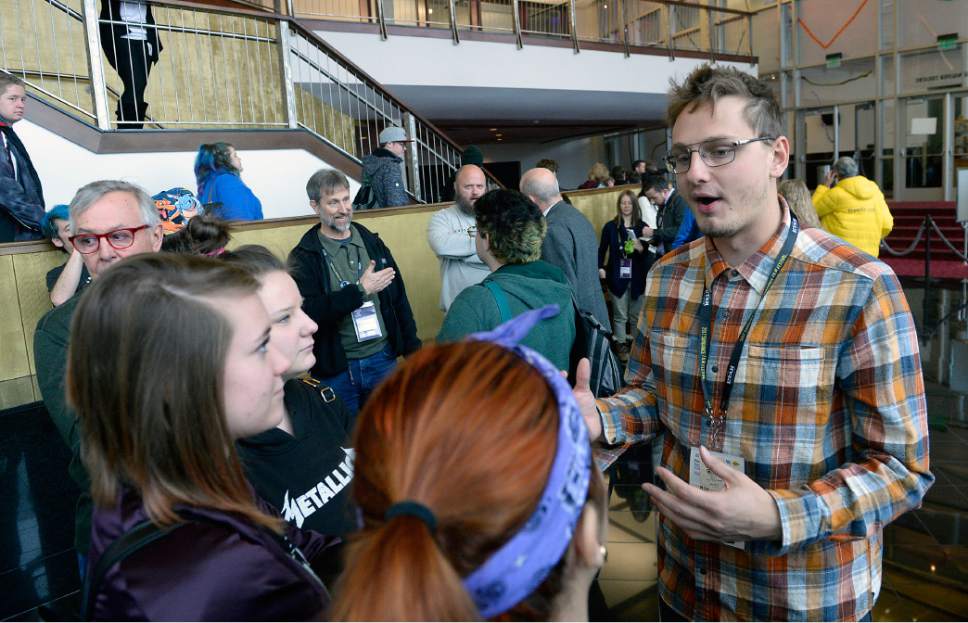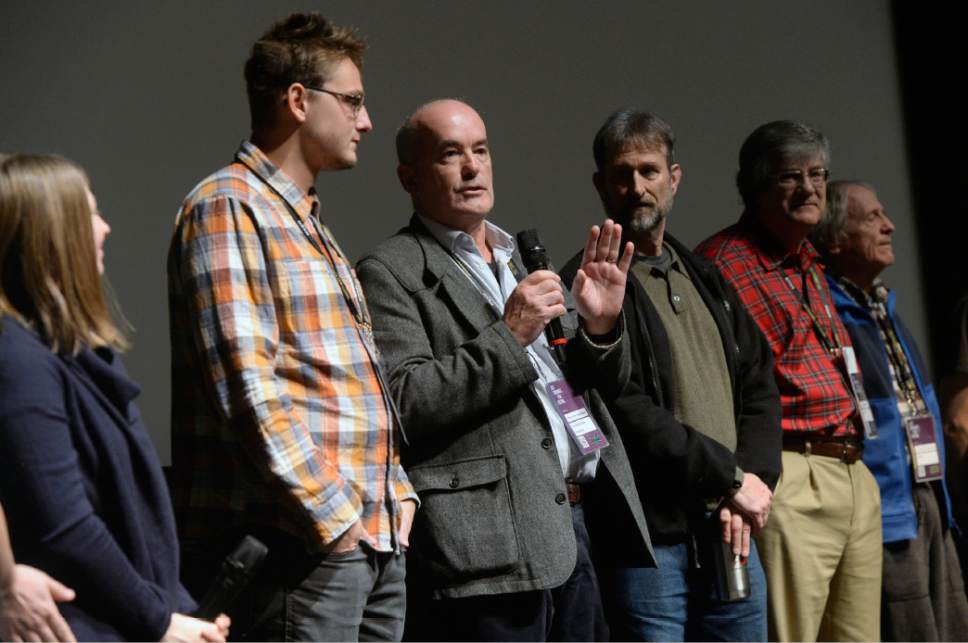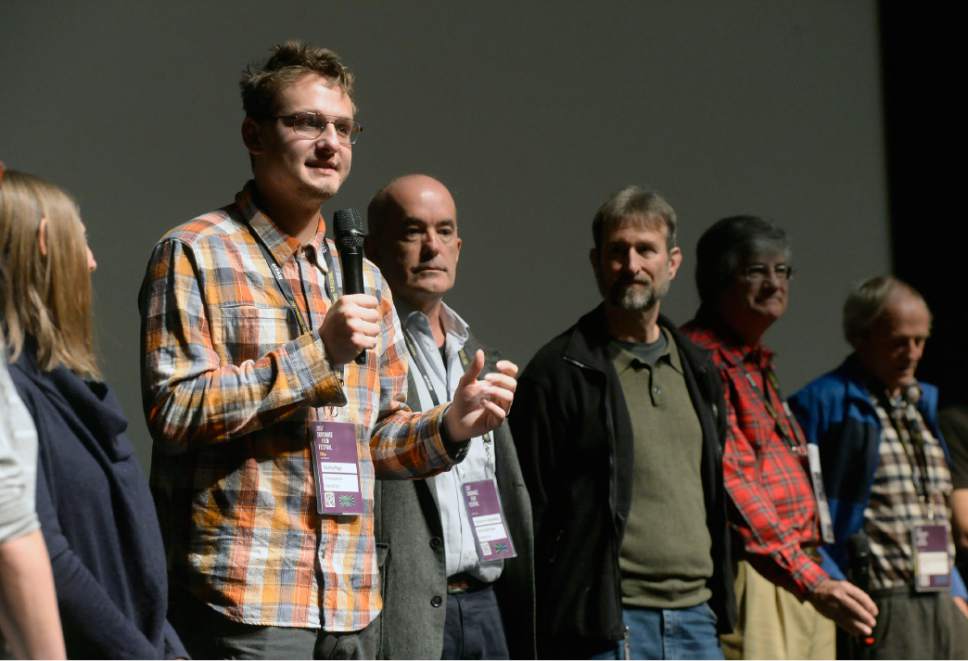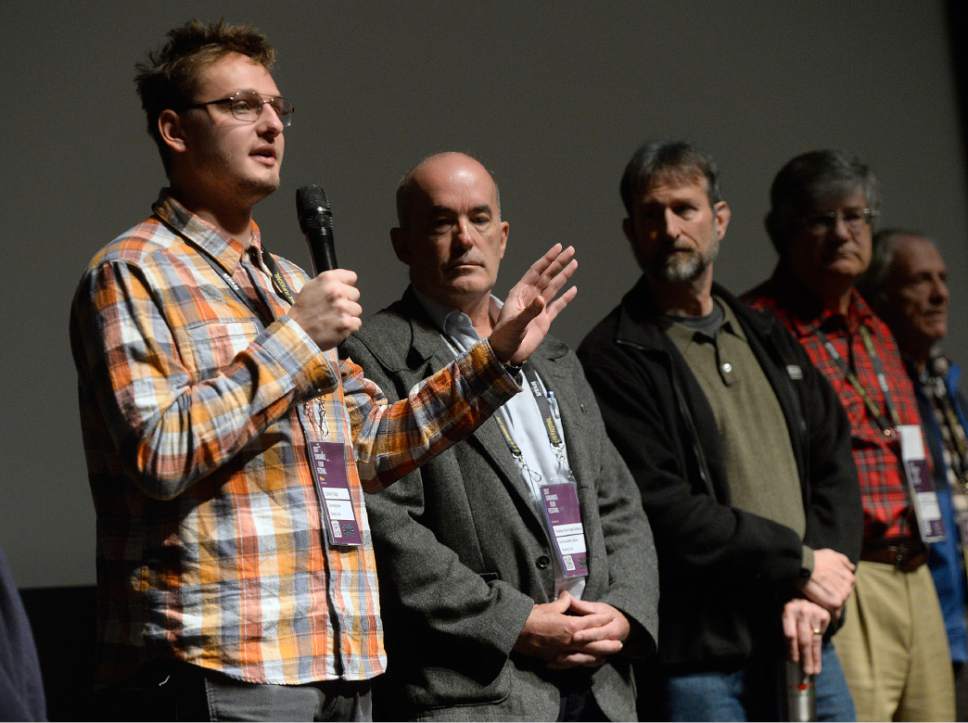This is an archived article that was published on sltrib.com in 2017, and information in the article may be outdated. It is provided only for personal research purposes and may not be reprinted.
The documentary film "Chasing Coral," part of the Sundance Film Festival, is filled with breathtaking and beautiful images of the world's marine life.
But it is the film's documentation of "bleaching," in which coral structures die and deteriorate due to increases in water temperature, that Lone Peak High School student Emma Hansen said left her "kind of scared" after a screening on Tuesday.
Hansen said she knew coral reefs were affected by global climate change. But she did not fully comprehend the extent of the damage, or the threat it poses to marine life.
"It's intimidating to think about what could happen in the future if we don't change," she said.
Hansen was part of a group of students from several Utah schools who watched "Chasing Coral" at the Rose Wagner Performing Arts Center on Tuesday.
Following the screening, several of the scientists featured in "Chasing Coral," as well as members of the filmmaking team, took the stage and reiterated the documentary's foreboding outlook on the future and significance of coral health.
"If you wipe out coral reefs, the geological record is very clear," said coral specialist John "Charlie" Veron, "It's the start of a mass extinction event."
James Porter, an ecologist from the University of Georgia, said the decline in coral around the world poses potential threats to human life. But human activity, he added, is also a key factor in preserving areas like Australia's Great Barrier Reef.
"The effect of human beings on this planet is similar to a meteorite strike," James Porter said. "We have a problem, it's got to get fixed."
According to "Chasing Coral," roughly 50 percent of the world's coral reefs have been lost during the last 30 years. Those losses are largely grouped into three global bleaching events, the most recent of which occurred in 2015, as global climate change has lifted average see temperatures to unsustainable levels for coral growth and recovery.
"Chasing Coral" is one of 10 Sundance Film Festival entries being screened for Utah students this month, part of the Sundance Institute's annual Student Screening Program.
"For 10 days the eyes of the world are on the Sundance Film Festival," program spokeswoman Kara Cody said. "It's just great to be able to include students in that experience."
The program began in 2000, with a new series of age-appropriate festival entries presented to participating schools each year.
The screenings typically include a question-and-answer segment with filmmakers, and Cody said Utah children are among the best audience members of the entire Sundance Film Festival.
"Kids don't hold back," she said.
Students were told that they live in an exciting time, when the threat of climate change is better understood and efforts are increasing to reign in carbon emissions and the burning of fossil fuels.
After an audience question about what individuals can do to preserve the world's coral, student were told to push their communities and leaders toward conservation efforts.
"Speak up, speak out, and don't take 'no' for an answer," James Porter said.
Twitter: @bjaminwood Sundance '17
The 2017 Sundance Film Festival runs through Sunday, Jan. 29, in Park City and at venues in Salt Lake City and the Sundance resort in Provo Canyon. Ticket and schedule information at sundance.org.


